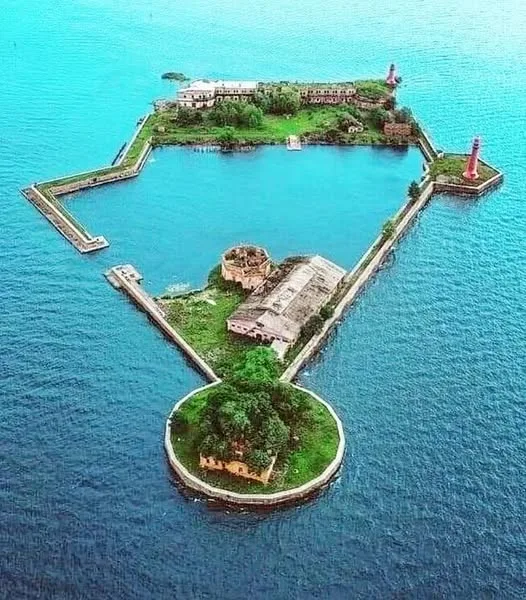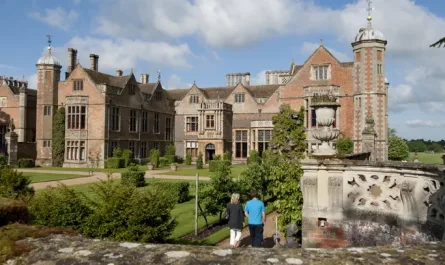Standing proudly in the choppy waters of the Gulf of Finland, Fort Kronshlot isn’t just an old structure; it’s a living testament to the strategic genius of Tsar Peter the Great and Russia’s formidable naval history. This 18th-century fortress, with its distinctive pentagonal shape and imposing granite walls, tells a captivating tale of defense, innovation, and unwavering determination.

Born of Necessity: Protecting a New Capital
The story of Fort Kronshlot begins in 1703, amidst the fervor of the Great Northern War. Peter the Great had just founded his new capital, Saint Petersburg, and it desperately needed protection from the encroaching Swedish fleet. He personally oversaw the ambitious project, understanding that control of the sea approaches was paramount.
The construction itself was a marvel of early 18th-century engineering. Imagine building a fort on an ice-covered sea! Engineers devised an ingenious method: wooden cabins, known as ryazhi, were filled with heavy boulders on the winter ice. When spring arrived and the ice melted, these structures sank to the seabed, forming a stable foundation for the fort. The initial fortifications, modest though they were, were inaugurated on May 18, 1704.
A Fort That Stood Its Ground
Kronshlot’s effectiveness was proven almost immediately. Despite its humble beginnings with just 14 six-inch guns, it successfully repelled Swedish naval squadrons in both 1704 and 1705, effectively slamming the door shut on any attempts to reach Saint Petersburg. This early success solidified its crucial role in the region’s defense.
Over the centuries, Kronshlot was continuously upgraded and reinforced, reflecting the evolution of military architecture. From its initial wooden form, it transformed into a formidable starfort with granite walls and pointed bastions, eventually bristling with over 100 large-caliber cannons. Even a catastrophic flood in 1824, which almost destroyed the fort, couldn’t keep it down. Extensive reconstruction efforts led to the completion of the powerful Nikolaev battery, making it an even more formidable obstacle for enemy vessels. By the mid-19th century, it even featured innovative two-level casemated batteries housing massive 11-inch guns, showcasing Russia’s pioneering spirit in naval defense.
A Historic Gem Today
While Fort Kronshlot was eventually removed from frontline service in 1896 due to the advent of even larger, more modern guns on other Kronstadt forts, its historical significance remains immense. During World War II, it still played a vital role, housing anti-aircraft guns and serving as a station for troops defending Kronstadt.
Today, Fort Kronshlot is a proud part of the UNESCO World Heritage Site “Historic Centre of Saint Petersburg and Related Groups of Monuments.” Though the fort itself is generally closed for direct internal visits due to its age and state of disrepair, you can still experience its grandeur and historical presence.
Visiting Kronshlot and Kronstadt
If you’re eager to see this piece of history, Kronshlot is located on an artificial island within the Kronstadt Fortress, which is now easily accessible from Saint Petersburg. Here’s how you can appreciate this magnificent fortress:
- Boat Tours: The best way to grasp Kronshlot’s strategic location and impressive scale is from the water. Numerous boat tours operate around the Kronstadt forts, offering fantastic views.
- Kayaking Tours: For a closer, more adventurous experience, consider a kayaking tour that can bring you right up to the fort.
- Explore Kronstadt: The city of Kronstadt itself is a treasure trove of naval history. Don’t miss the stunning Naval Cathedral of St. Nicholas, the Kronstadt Seafront with its active warships, and Petrovsky Park. From the Lower Nikolaevsky Lighthouse nearby, you can also get some excellent views of the fort.
Fort Kronshlot stands as a powerful, silent sentinel in the Gulf of Finland, a testament to Peter the Great’s vision and the enduring legacy of Russia’s naval might. It’s a truly captivating destination for anyone interested in history, architecture, and military strategy.
Have you ever visited any historical fortresses? What was your most memorable experience?





